For those who know me and much of my personal story, you’ve probably heard me talk more than a few times about Rotary International. If you’re not fully aware of what Rotary is and does, well, it’s a lot. Rotary is an international service organization focused on addressing community needs and supporting programs that make the world a more connected and healthier place for everyone.
At the international level, Rotary is well-known for their End Poilo Now program, which has very nearly accomplished its goal of eradicating polio from this world. As of this writing, only 17 cases of polio remain on Earth. Amazing!
Rotary also supports various scholarships, study abroad programs, cultural exchanges, and peace fellowships, all under the banner of their motto, “Service above self.”
There is a comprehensive collection of youth programs within the Rotary portfolio, several of which I had the pleasure of participating in when I was young:
- Interact is for kids aged 12 - 18 years old and is a common first step into the Rotary Family. Here, kids develop leadership skills and get a taste for community engagement.
- Rotary Youth Leadership Awards (RYLA) is an intensive and fun leadership development experience for people between ages 14 - 30 years old. In my case, RYLA took the form of a summer camp.
- Youth Exchange enables students aged 15 - 19 years old to become citizens of the world by studying abroad in more than 100 countries. The program’s duration can last from a few days up to one year. This is what enabled my year abroad in Germany when I was 17 years old.
- Rotaract is similar to Interact but for the age group from 18 - 30 years old. It is most common in the United States to find these associated with universities as a student club. In many other parts of the world, it is more common to find Rotaract Clubs open to the broader community.
There are many more Rotary Youth Programs. If you or someone you know is interested in participating in one of them, please visit rotary.org to learn how to get in touch with a Rotary Club near you. They will be thrilled to hear from you!
How Rotary changed my life
You can read nearly any post on this blog and see the ripple effect Rotary has had in my life. From influencing my decision to study foreign policy to enabling my adventures around the world. Rotary’s impact on me when I was young has gone on to have a resounding effect on my life’s path and the choices I make every day.
So when I was recently asked to present my story to the Rotary eClub of Silicon Valley, I was honored. The opportunity came about thanks to my new book, Exponential Happiness, in which I offer the same words of encouragement that I received at a young age, which were the catalyst to my saying “yes” when Rotary came along and asked if I would like to participate in their Youth Exchange program. As a result, I spent one year in Germany, and the course of my life was forever altered.
In my presentation, I only had about 20-minutes to share my thoughts, so I boiled them down to these two points:
- The value of being young
- The value of showing up
The presentation went well, and the feedback got me thinking more and more about the story I want to tell. Here, I have decided to recap what I shared in that presentation so that all of this blog’s readers can benefit from the message I shared there.
The value of being young
Youth is the only currency that can not be replenished. Once spent, it is gone forever. When we are young, we have more flexibility in how we choose to spend our time. The choices we make during our youth set the foundation for what our life is to become.
All of that likely makes sense to you and might sound familiar as something you’ve heard before. I find it rather challenging to come up with an original thought about the advantages of youth. If there is one topic that humanity has obsessed over universally since the dawn of time, it is the desire for youth to be prolonged, followed by the never-ceasing advice of elders to “do it while you’re young.”
It is easy to look back on one’s youth and think of all the ways in which you may have made better choices or to have used that time more advantageously. But it is not so easy to see the path when you are young. After all, being young also comes with limitations: lack of experience, lack of resources, and lack of direction, just to name a few.
Do it while you’re young; a cliche thing to say, yes,
but not at all a cliche thing to do.
It’s good and all for older people to encourage younger people to “do it while you’re young,” but it isn’t enough. Encouragement is critical, but conveying a more in-depth appreciation that can activate a sense of empowerment to youth is more complicated. Young people need to be shown the path, not pushed down it.
A fundamental question to answer is, why does doing it young matter?
In my post Why Travel While Young? I shared the below graph, which outlines some cookie-cutter phases of life and how these phases’ responsibilities occupy a person’s ability to be flexible.
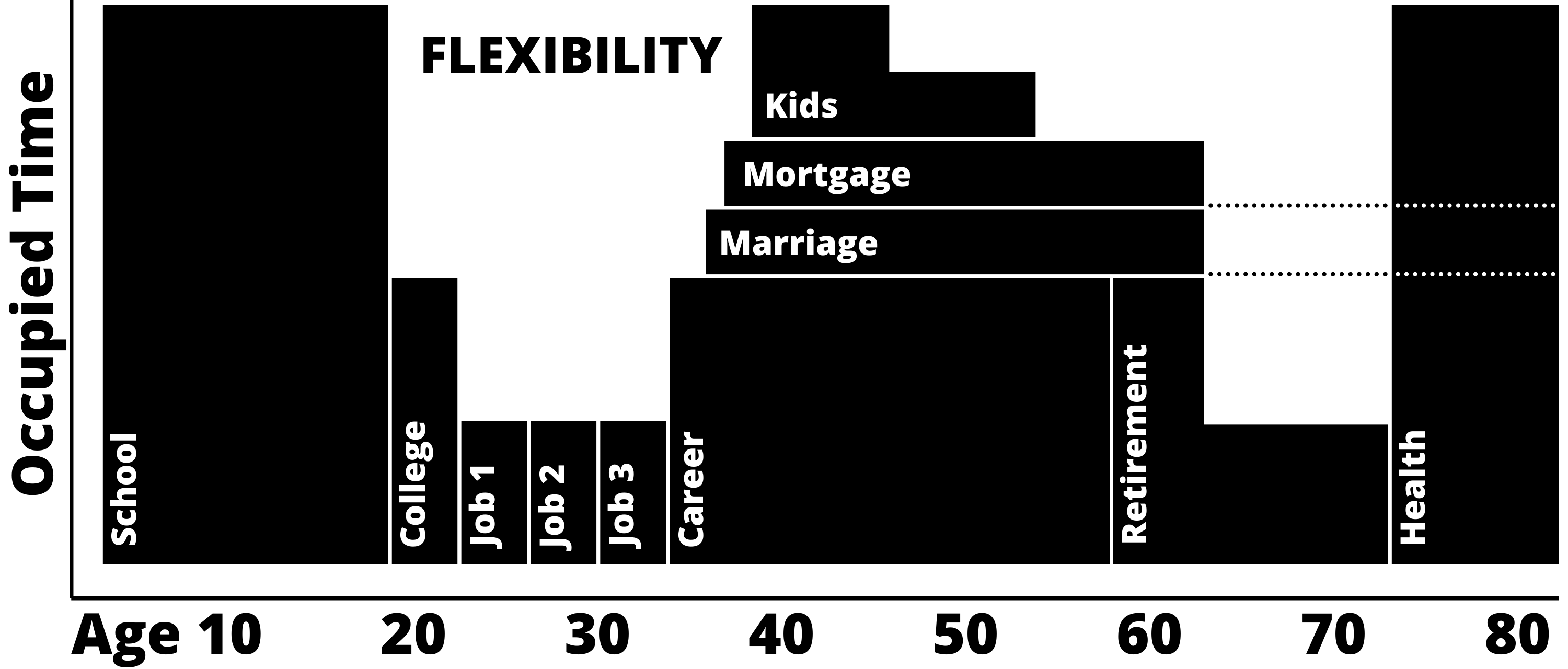
Each of these phases comes with joys, advantages, and disadvantages of being flexible in your decision-making. For a deeper dive, read that blog post. The main take away is that youth = flexibility, and flexibility = capacity to choose happiness.
The other significant advantage in youth comes from the world of economics. According to Wikipedia, “compound interest is the addition of interest to the principal sum of a loan or deposit, or in other words, interest on interest. It is the result of reinvesting interest, rather than paying it out, so that interest in the next period is then earned on the principal sum plus previously accumulated interest.”
All an investment needs to benefit from compounding interest is time. As the human lifespan is limited, and the end of life can not be prolonged, it is essential to start investing as early as possible.
Compound interest is the eighth wonder of the world. He who understands it, earns it ... he who doesn't... pays it.
Like compounding interest in your financial investments, starting early and giving fully makes a big difference later in your life. Just reference the simple chart below. The blue line is compounding, while the red line is only 10% less input. What a difference it makes! So as my dear friend Paul Cummings says, “live your life at Level 10, every day, every time, without fail, no exceptions!”
What does Rotary have to do with the value of being young?
Simply put: Rotary is one of the world’s most well-established, trusted, and respected organizations. This stature positions Rotarians in a special place to be entrusted with youth, as the existing youth programs exemplify.
Rotary as a whole, and Rotarians as individuals, must continue to engage young people in this regard. Reach out, be a friend, be an equal. Mentor young people and encourage them to follow their dreams. It is not enough to give them cliche pep-talks. Rotarians can do better than that. Work hand-in-hand with young people and change their world forever.
The value of showing up
My presentation’s second point stemmed from my philosophy to show up. Again, it sounds easy, but so often in life, people simply fail to show up.
The world is full of open doors. Some may never be worth walking, though, but many that lead to great success are never approached. Sometimes people are held back by life’s circumstances. Other times it is flat out laziness. The worst thing is when a person isn’t lazy but still fails to show up due to a lack of confidence. It’s this last one that I most want to encourage young people to do away with. Be confident.
Opportunities don’t go to the most qualified;
they go to the people who show up.
There are many forms, “showing up” takes in life. I will share anecdotes from 5 ways showing up changed the world (my world) to explain a few of these forms.
1. Applying
How many applications have you filled out in your life? Think about all the job applications, scholarship applications, apartment applications, credit card applications. There is such a variety! Sometimes it feels like we have to apply for everything in the modern world.
Of the applications you started to write, how many did you submit? I bet it’s not 100%. Of those applications you did submit, how many were accepted? I can guarantee that it is not 100%, either.
Applications are necessary, if not bureaucratic, part of life. They are the paperwork standing between you and some goal. And they are frustrating.
Filling out applications is less fun than watching paint try, and yet, we commit hundreds of hours to them. We do this for one reason: in hopes of being accepted into a brighter future.
I have a folder full of every resume and cover letter I’ve ever written. There are more than 100 custom letters in there, and 0 of them resulted in a job. Yet, it was still a fair use of time to write those cover letters because, at that moment that I was asked to an interview, I had already refined my elevator pitch.
Some of those jobs I applied to I was really qualified for and very excited about. Yet, I didn’t get so much as a phone call.
But I didn’t let all that failure get me down. If anything, I just became more tenacious. So let me tell you about an application I thought I had no qualifications for, and yet it led to one of my life’s most exciting experiences.
Once upon a time, I received a notification about a fellowship program called East-West: The Art of Dialogue. The fellowship aims to bridge relationships between east and west (primarily Egypt and the United States) amongst young professionals and leaders to encourage a dialogue that leads to a more prosperous and peaceful future between us.
In my mind, “fellowship” was something for academics or students. I had never been to Egypt and had no idea about Egyptian business, politics, or culture. Certainly I couldn’t be qualified, right? Wrong.
It turns out that one of the qualifications was a lack of experience in Egypt. So I applied, was accepted, and then spent a month traveling with an incredible group of people around Egypt and the United States. We met with leaders in government, education, religion, business, and more. You can read my notes here.
As of this writing, I am still writing about my Egypt experiences, but when I get that done, you will find those posts as part of my Egyptian Travel Guide. In the meantime, here is a photo of me on the Suez Canal shaking hands with the captain of the Egyptian Presidential yacht, on which we are standing.
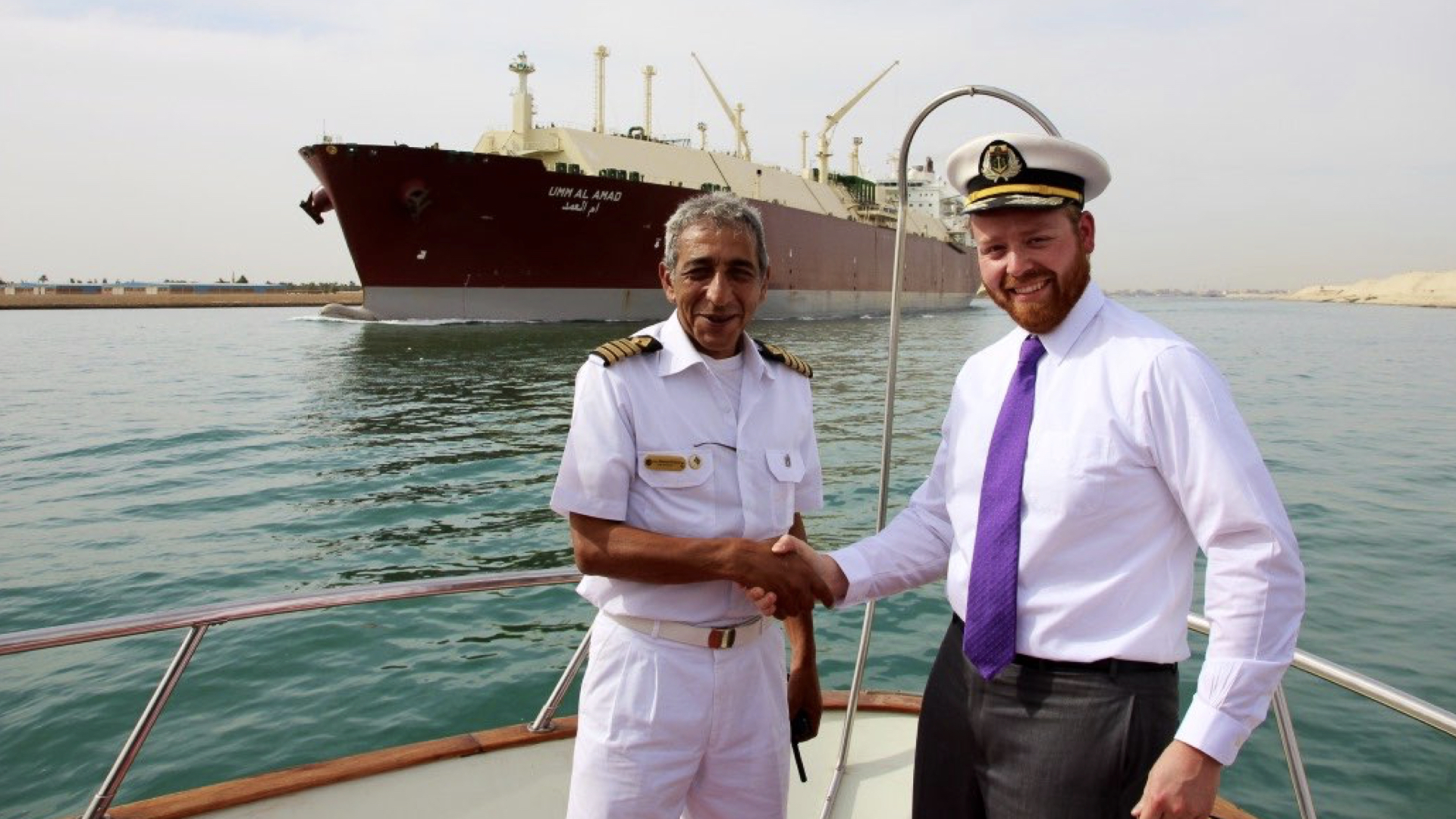
2. Invitation
The United States Peace Corps operates in countries where they have been invited to do so. Likewise, Peace Corps Volunteers are invited to serve in their country of (eventual) service. Though joining the Peace Corps does begin with an application (you really can’t get away from those things), in the end, you are invited to serve in a specific capacity and location.
I was invited to apply, and I am so glad that I accepted that invitation. 6-months later, I had my boots on the ground in Kyrgyzstan. I established a really strong legacy with my work in Kyrgyzstan as a Peace Corps Volunteer.
Not only was this the most rewarding 27-months of my life, but the work I did there in establishing an online network for journalists in rural areas, kyrgyzmedia.kg, has gone on to enable a national association of Community Media and has changed the capacity of rural communities to have their voice heard all around the world.
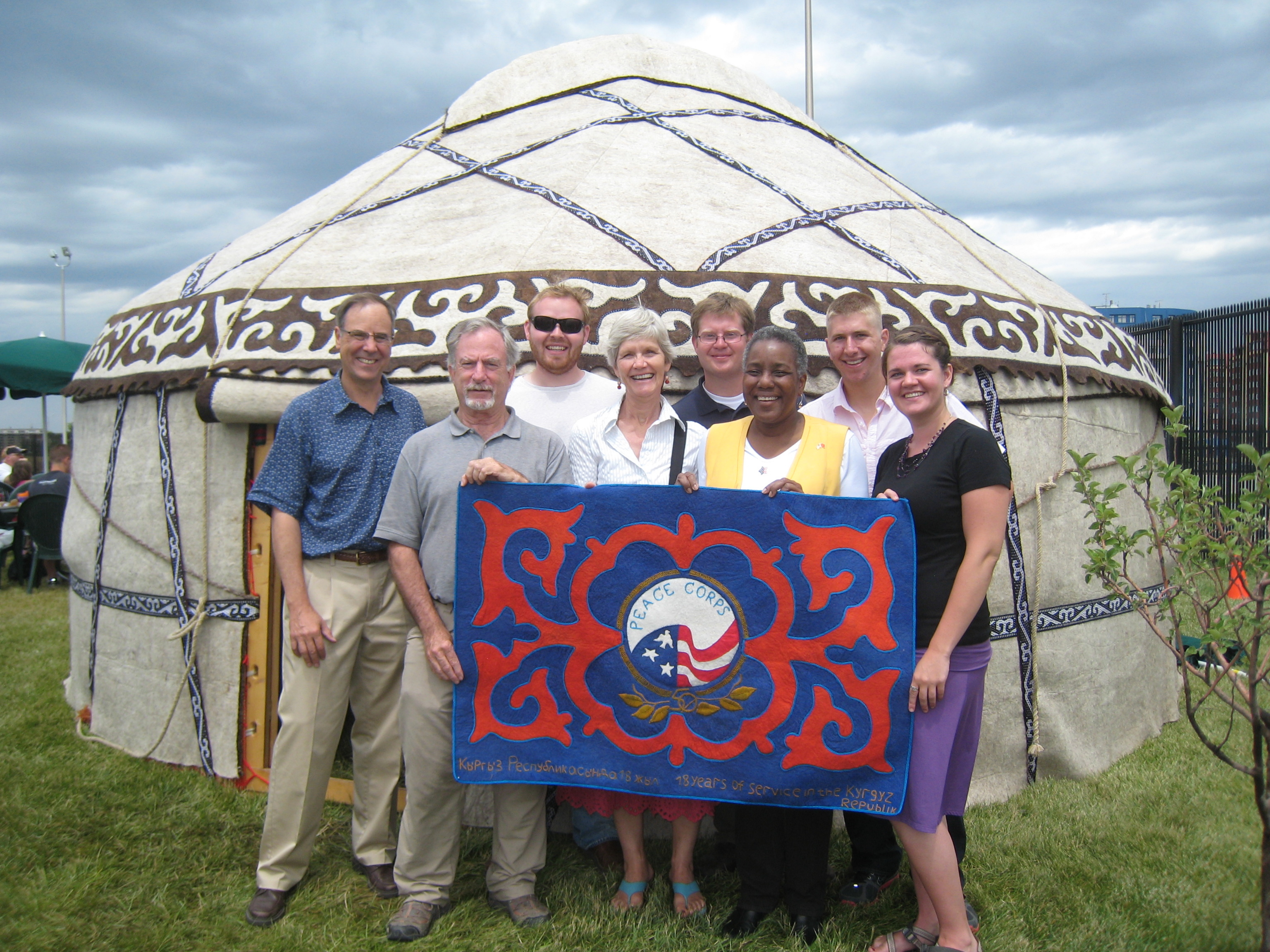
3. Random Chance
Sometimes you can’t plan for success. Life happens, and you get lucky. At that moment, when fate smiles on you, you best be ready. Use all of the learnings from those applications and invitations to be prepared to respond as best as possible when that random chance comes your way.
One of my favorite pieces of self-trivia I like to surprise people with is that I am the album photographer for the White Stripe’s vinyl release of their final live performance. Read the credits of The White Stripes Live In Mississippi here if you like.
My first job after university was as a concert promoter. I worked with many prominent artists, but on July 31, 2007, at Snowden Grove Amphitheater in Southaven, Mississippi, I worked with The White Stripes. I didn’t know it at the time, but that was their last concert as a group.
I took a lot of photos that day. Notice how I said “photos” and not “photography.” I was using a cheap point-and-shoot digital camera and not worried about attention to detail. By the end of the day, I had a few hundred photos and posted them for safe-keeping to my Flickr account.
I didn’t think about these photos again until March 2011 when my phone rang and a guy introduced himself as the manager of The White Stripes. He told me about this album and asked if they could use my photos for it. Of course, I said yes! What an honor! And so they did. And just like that, I am the album photographer for the White Stripe’s vinyl release of their final live performance.
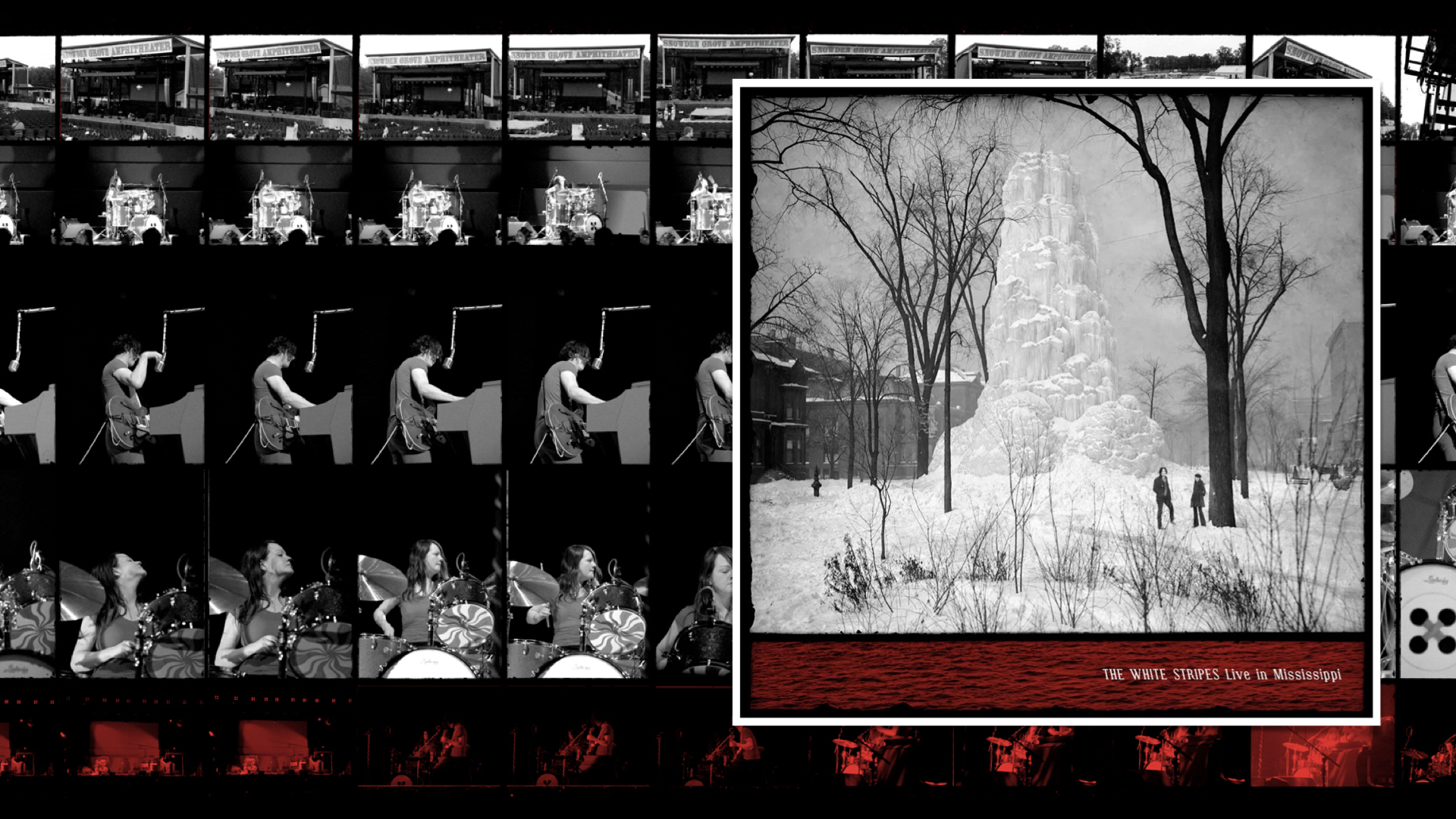
4. Volunteering
Hurricane Katrina devastated New Orleans and the American Gulf Coast in August 2005. I was a college student in Baton Rouge, and as classes were canceled for a week and I had no direct impact of the storm on my family or me, I volunteered to help those in need.
I showed up to the local Red Cross chapter office to ask what I could do, really without any idea what the outcome might be. It turns out, they were so desperate for help that they appointed me, and my girlfriend at the time, as shelter managers of 300 souls in a nearby high school gym. That gig lasted for three days and might be the best education I got in college.
On the third day, the inhabitants of this small shelter were relocated to a larger facility, and I was relieved of duty. So I carried on the next weeks volunteering where I could. And then a strange thing happened; all the more odd because I have no memory of how it happened: I became a full-time employee of the Red Cross. I served as the Emergency Response Planner for the next two years until I graduated from university and went into the music business.
In this role, I was part of the Governor’s Taskforce on Emergency Preparedness. I worked with FEMA, the International Red Cross, local and state police, and many other first responder agencies. I literally rewrote the book on how the Red Cross should respond to emergencies in southern Louisiana. When Hurricane Gustav hit the region in 2008, I showed back up to volunteer, and the Red Cross shelter managers I met had my plan printed in their go-boxes. This was one of my proudest moments, and I hope that my effort has served the region well ever since.
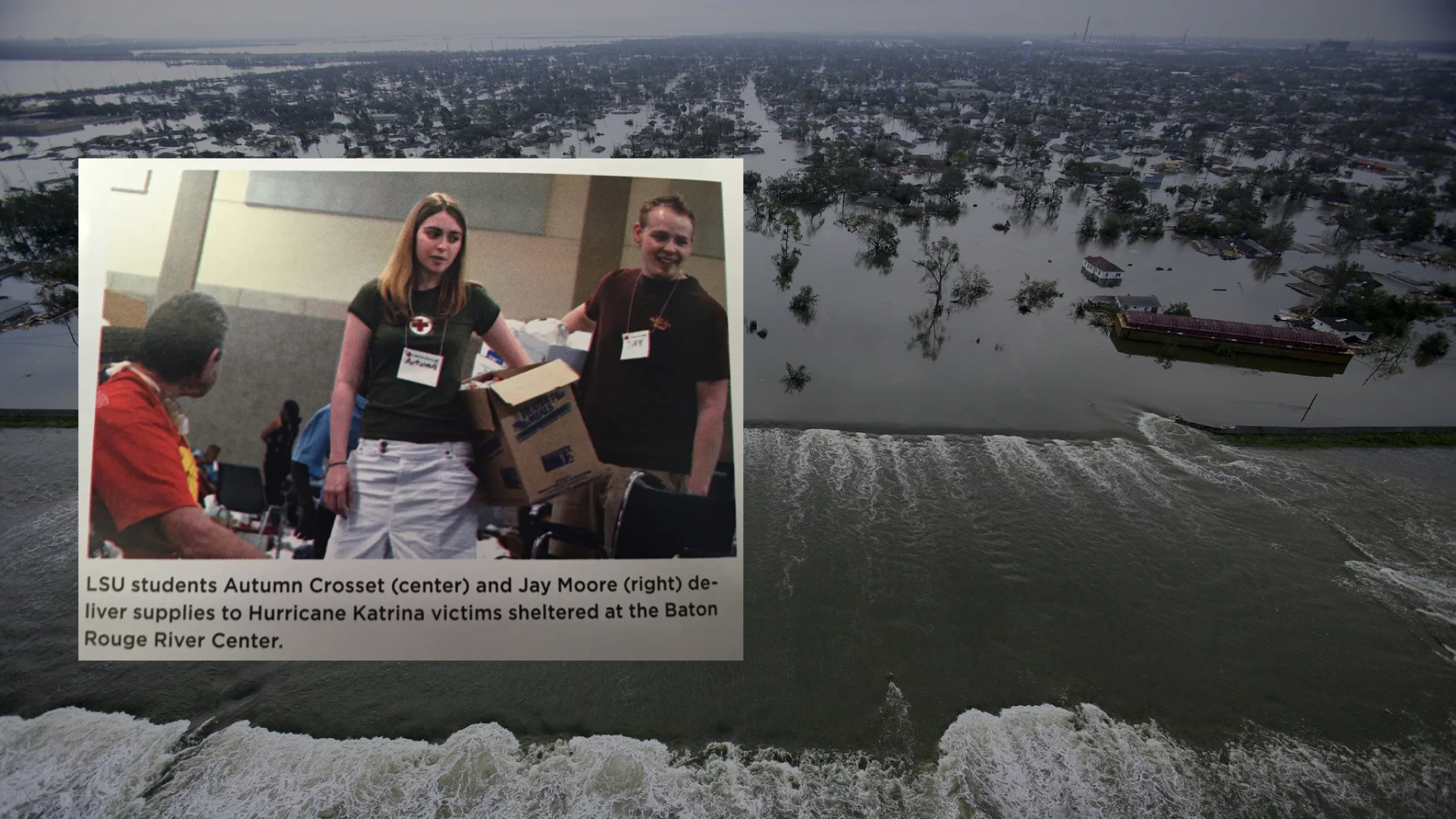
5. Hand Raising
The single most important moment of my life came about from a simple call to action, “if this is interesting to you, raise your hand, and come see me after.”
This was part of the closing statements given by a representative of the Rotary Youth Exchange Program who came to speak at A Rotary youth camp called Camp RYLA (all linked at the top of this post).
I thought to myself, “that is a line I must get in!” Indeed, I felt that I would have to be elbows-out, jumping up and down to get noticed by the speaker, but when the talk ended, I ran to the front, and every single other student walked outside to play a game. I was the only person who expressed interest, the only one who raised my hand that fateful morning.
As a result, the next summer, I departed on an epic one-year study abroad journey to Germany. This year set the foundation for who I was to become later in life. In fact, since 2016, I have been living in Germany again!
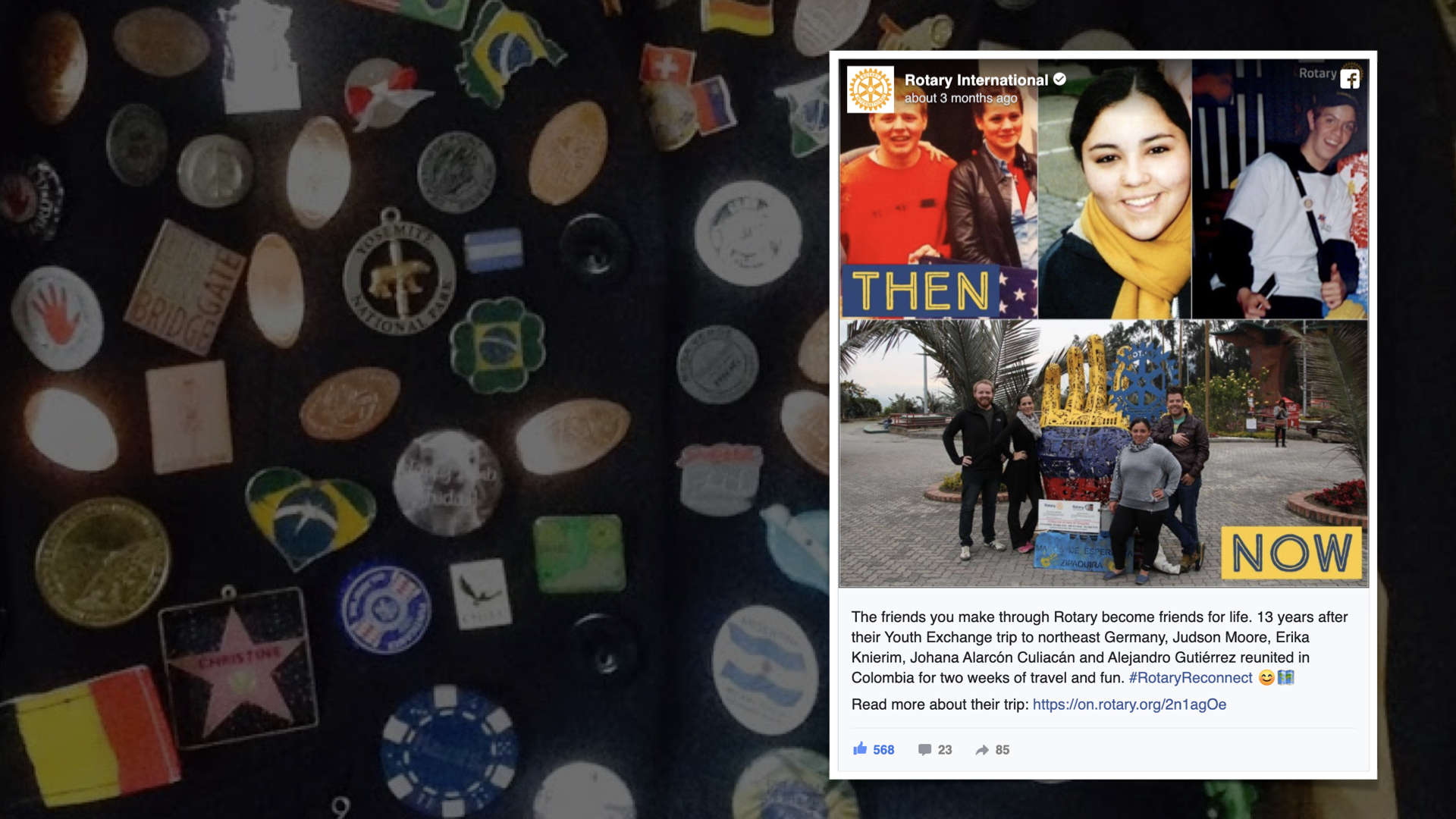
What does Rotary have to do with showing up?
Repetition, repetition, repetition! I said it before, and I will say it again: find that young person in your life or your community and encourage them to take the leap. Instill the faith and courage in young people to raise their hands when invited to apply for a life-changing experience, especially if it is one of Rotary’s life-changing experiences.
I surveyed 30,000 Rotary Youth Exchange Students
I conducted a survey on Facebook in a private group with 30,000 members called You Know You’re a Rotary Youth Exchange Student When…. I wanted to know how much influence others had played on these students’ decision to leave their homes at a young age and participate in an exchange program.
The results surprised me.
Survey results
When you decided to do an exchange, how influential were others in helping you decide to do it?
If most Rotary Youth Exchange Students claim that others were not influential in their decision to do an exchange year, what does that mean for Rotarians? How can you then make an impact on would-be youth program participants?
I imagine that the 74% of respondents who claim there was no outside influence on their decision to participate in a youth exchange program may also represent, in part, those children of Rotarians and others close to the Rotary family whos recruitment into Rotary Youth Programs is relatively easy. It’s terrific that those students are involved, but it isn’t enough. This creates an echo chamber in Rotary and doesn’t take full-enough advantage of Rotarians’ ability to leverage the Youth Programs’ openness to be more inclusive in the community.
Tips for healthier recruitment into the Rotary family
Recruitment is challenging, and it is very tempting to only work with those ambitious students you already have contact with. By all means, they should be encouraged to apply, but they shouldn’t be the only applicants considered. Here are two things every Rotarian can do to improve Youth Program recruitment:
- Evangelize the benefits of Rotary Youth Programs earlier. For those who are harder to find, more difficult to reach, or timider about Rotary’s grandiosity and our programs, get the word to them at a younger age. For example, you shouldn’t be talking only to 10th graders about youth exchange; speak to 6th graders about it. Get them dreaming earlier and watch recruitment become all the easier later.
- Look beyond the Rotary family. Rotary’s youth programs are open to the community, without any Rotary membership prerequisite in their family. Embrace young people who express interest and find a way for them to get involved with Rotary. If your club or district isn’t active with any youth programs, then work with students you’re in touch with to get something started and take a leadership role in spreading the Rotary philosophies.
There are a lot of creative ways to get young people’s attention. Be sure that your club has a committee to discuss these topics and get to work!
Watch my original presentation
You can read all of the meeting notes and find my original presentation on the website of the Rotary eClub of Silicon Valley. Alternatively, I’ve embedded the talk below.
Questions, comments, or additions to make? Please leave me a comment below the video.
